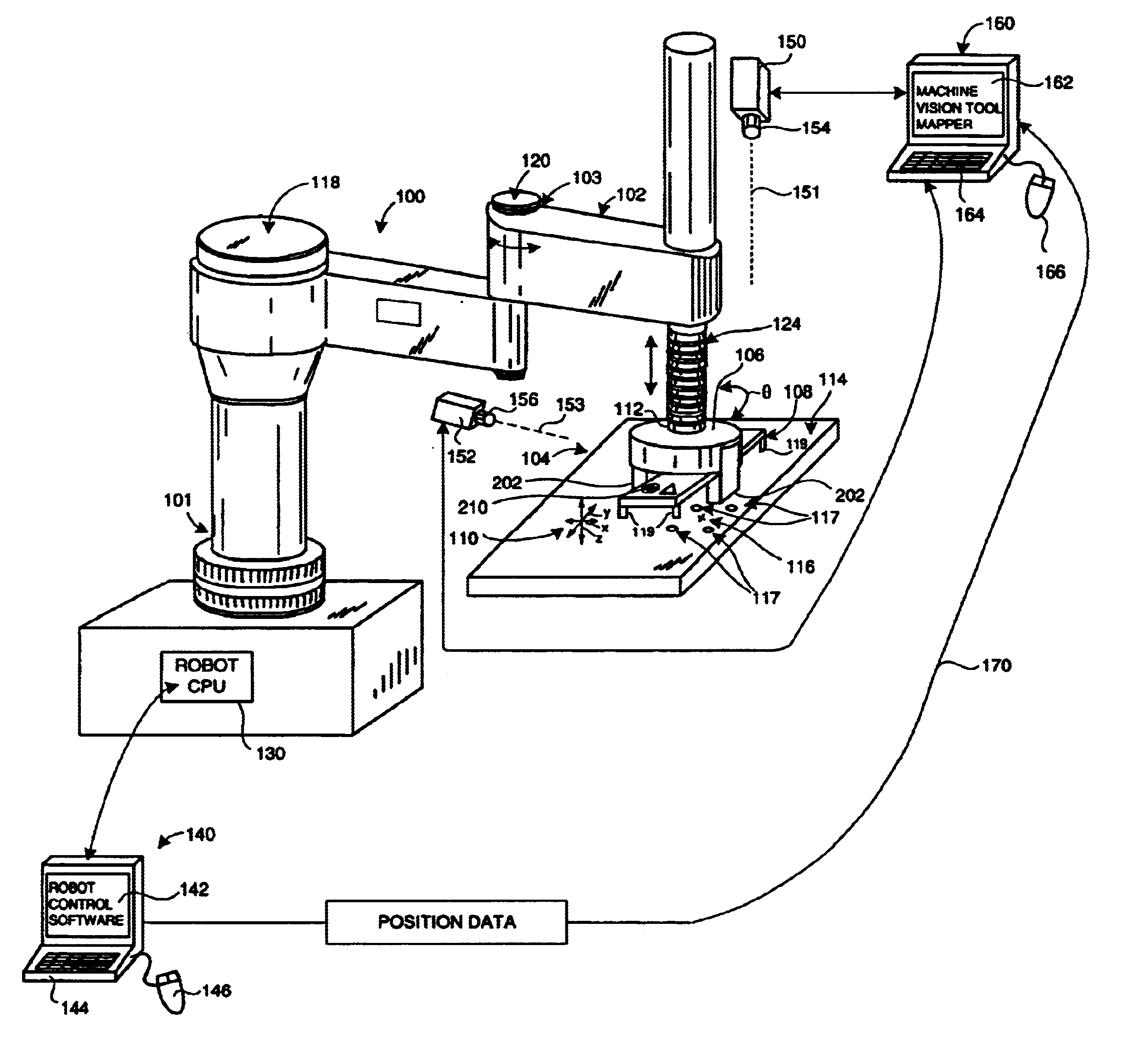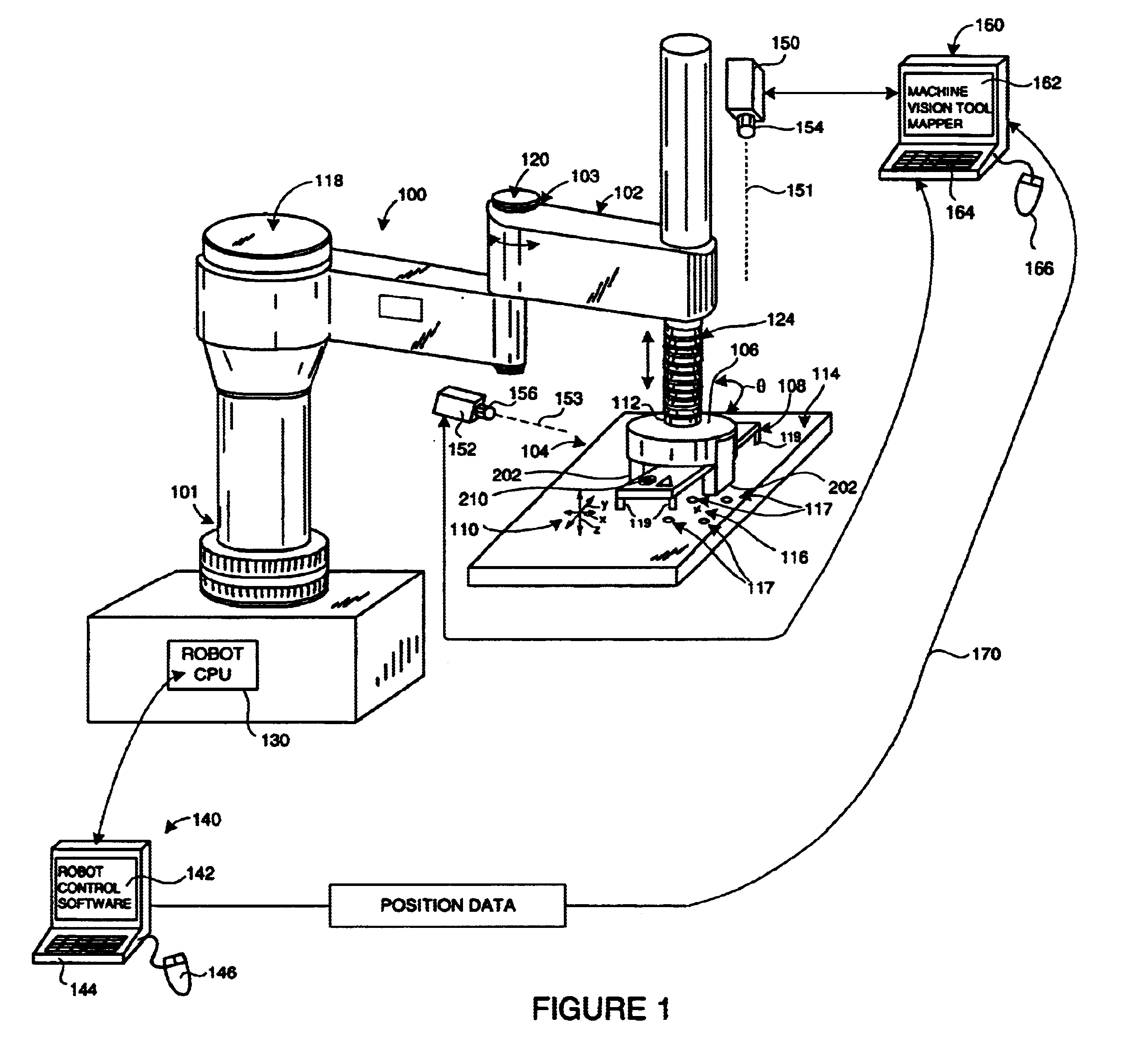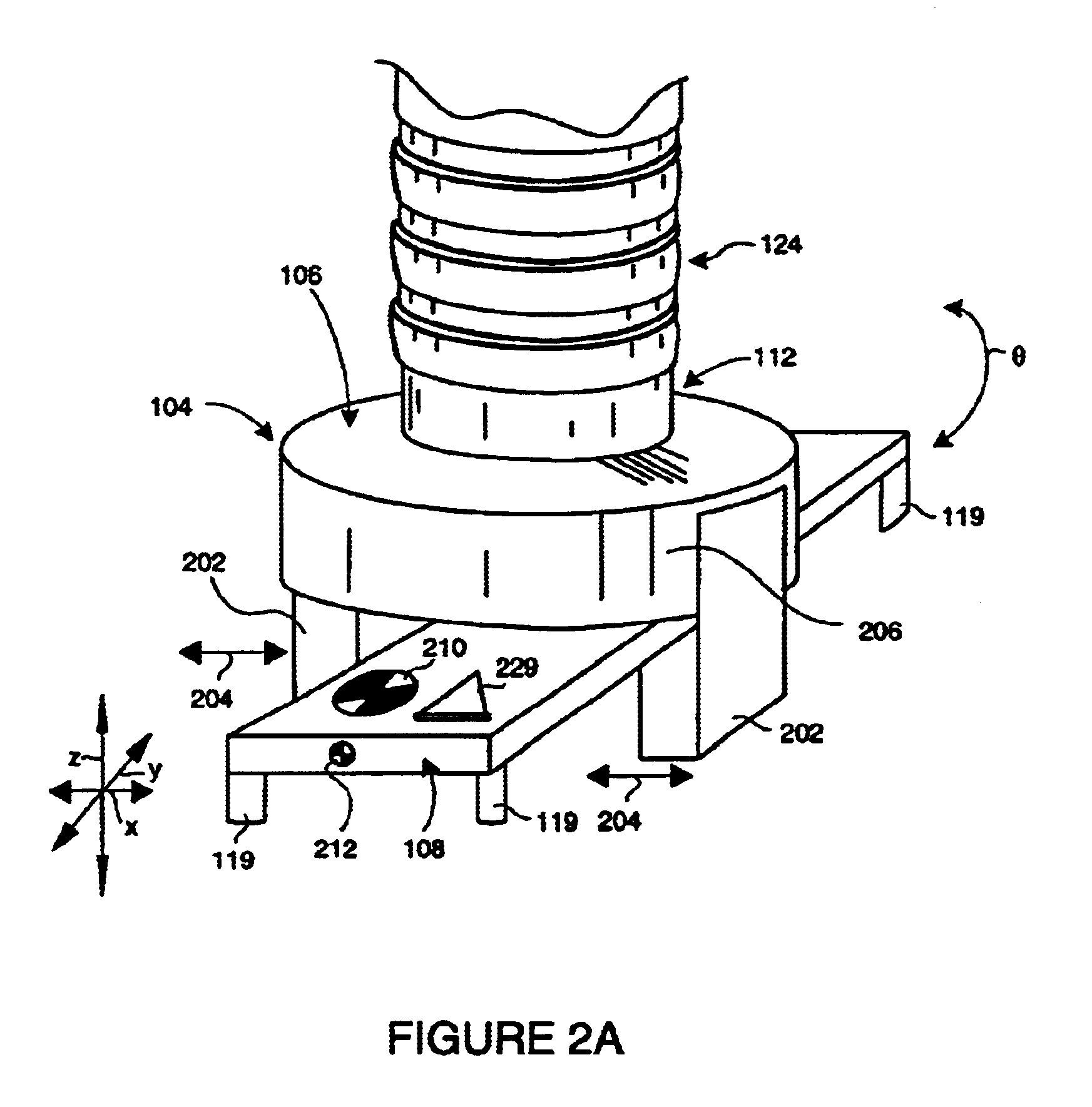System and method for servoing robots based upon workpieces with fiducial marks using machine vision
a robot and workpiece technology, applied in the field of machine vision systems, can solve the problems of limited servoing approach, unacceptable/defective parts of the surface, and limited servoing approach
- Summary
- Abstract
- Description
- Claims
- Application Information
AI Technical Summary
Benefits of technology
Problems solved by technology
Method used
Image
Examples
Embodiment Construction
. 1 shows an exemplary robot assembly 100, mounted on a base 101, including a manipulator unit 102 having a multi-jointed arm 103 capable of moving an end effector 104 in at least four degrees of freedom-along three orthogonal axes (axis arrows x, y and z(scale)), and one rotation (curved arrow .theta.). The end effector 104 is provided with a gripper assembly 106 that enables engagement with, and disengagement from, a work-piece 108. The end effector 104 is movable by robot control commands along the three linear axes x, y and z, as shown generally by the set of axis arrows 110. The transverse x and y-axes are typically within the viewed plane perpendicular to the camera axis and an orthogonal z-axis is typically a distance / scale coordinate with respect to the camera. In addition the end effector includes a rotating wrist 112 that enables rotation (curved arrow .theta.) relative to the manipulator arm 103 with the rotation axis generally perpendicular to the plane defined by the x ...
PUM
| Property | Measurement | Unit |
|---|---|---|
| Angle | aaaaa | aaaaa |
| Angle | aaaaa | aaaaa |
| Angle | aaaaa | aaaaa |
Abstract
Description
Claims
Application Information
 Login to View More
Login to View More - R&D
- Intellectual Property
- Life Sciences
- Materials
- Tech Scout
- Unparalleled Data Quality
- Higher Quality Content
- 60% Fewer Hallucinations
Browse by: Latest US Patents, China's latest patents, Technical Efficacy Thesaurus, Application Domain, Technology Topic, Popular Technical Reports.
© 2025 PatSnap. All rights reserved.Legal|Privacy policy|Modern Slavery Act Transparency Statement|Sitemap|About US| Contact US: help@patsnap.com



